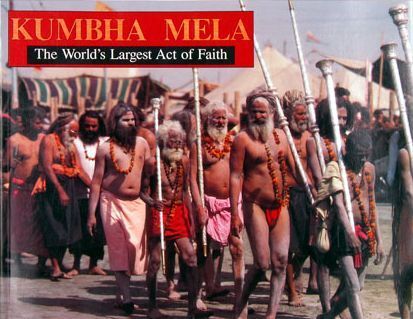
On the occasion of Kumbha Mela, pilgrims from every nook and corner of India - speaking different languages and dialects, wearing distinctive markings on their foreheads, donning various types of dress and observing different manners and customs - meet together for a holy bath in the sacred waters. Wave after wave, the pilgrims formed a veritable river of humanity that flowed unto the banks of the Ganges at Allahabad to celebrate the greatest spiritual festival ever held - Kumbha Mela, the worlds largest act of faith.
